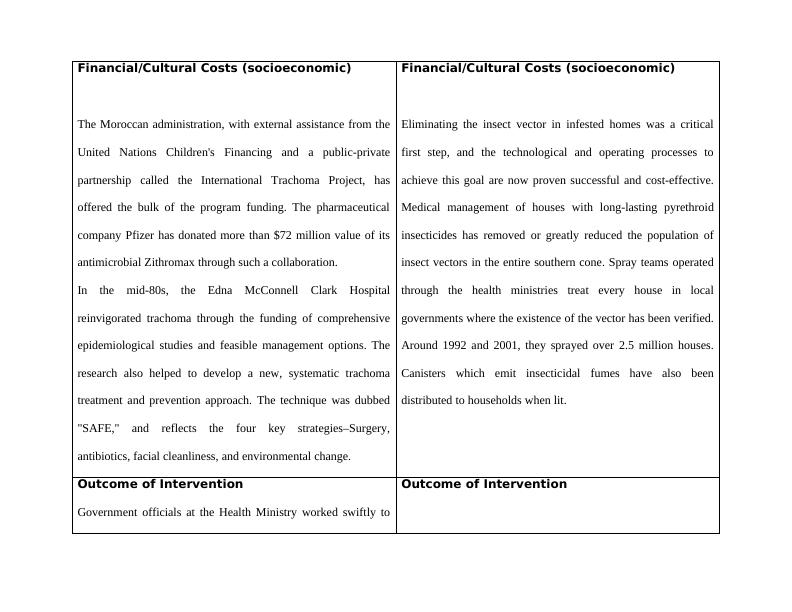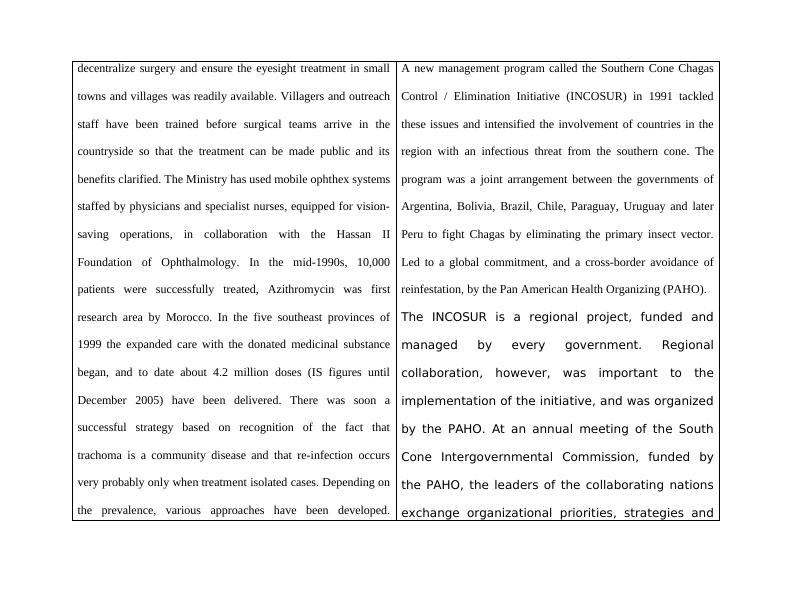Case Study Assignment – Environmental Global Health
Read the case studies for this assignment and complete the provided template. Use concepts learned in class and other credible resources to analyze and present findings on controlling Trachoma in Morocco and controlling Chagas Disease in the Southern Cone of South America.
6 Pages1163 Words30 Views
Added on 2022-08-23
Case Study Assignment – Environmental Global Health
Read the case studies for this assignment and complete the provided template. Use concepts learned in class and other credible resources to analyze and present findings on controlling Trachoma in Morocco and controlling Chagas Disease in the Southern Cone of South America.
Added on 2022-08-23
ShareRelated Documents
End of preview
Want to access all the pages? Upload your documents or become a member.



